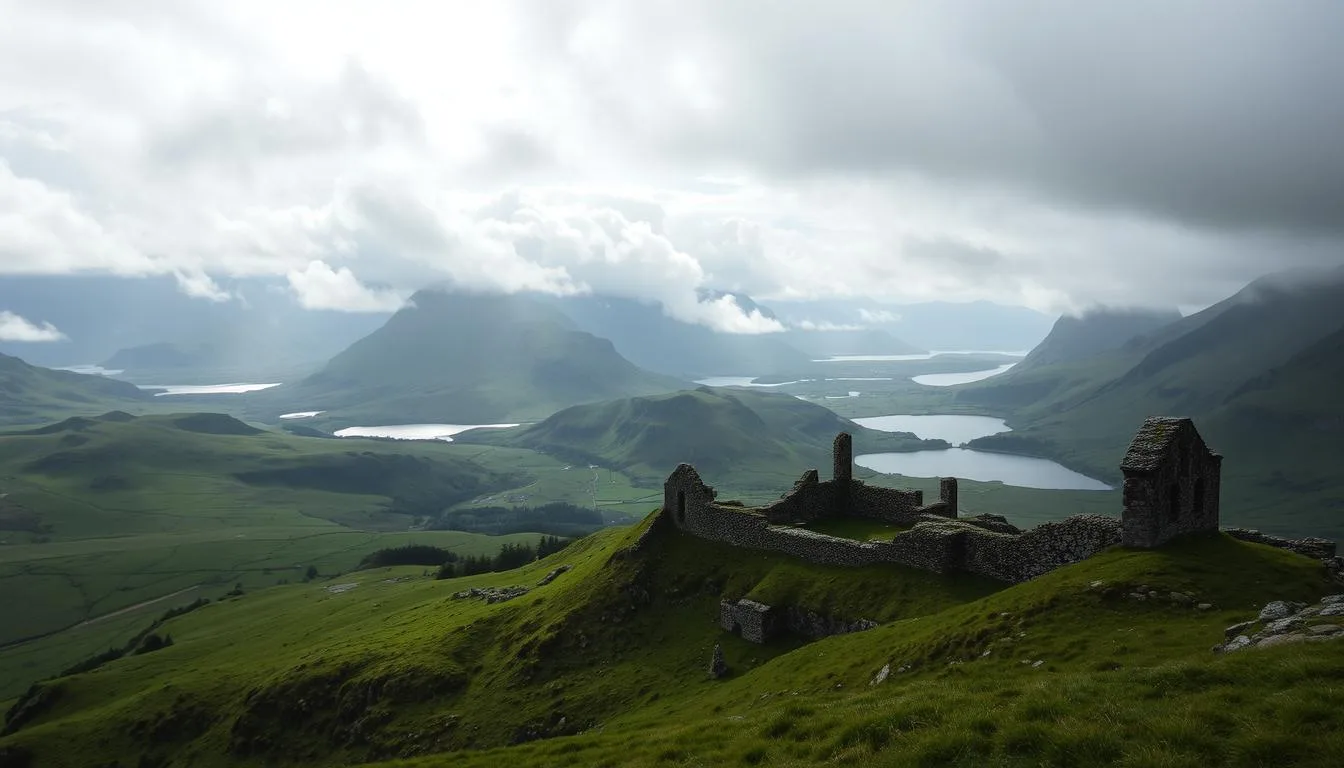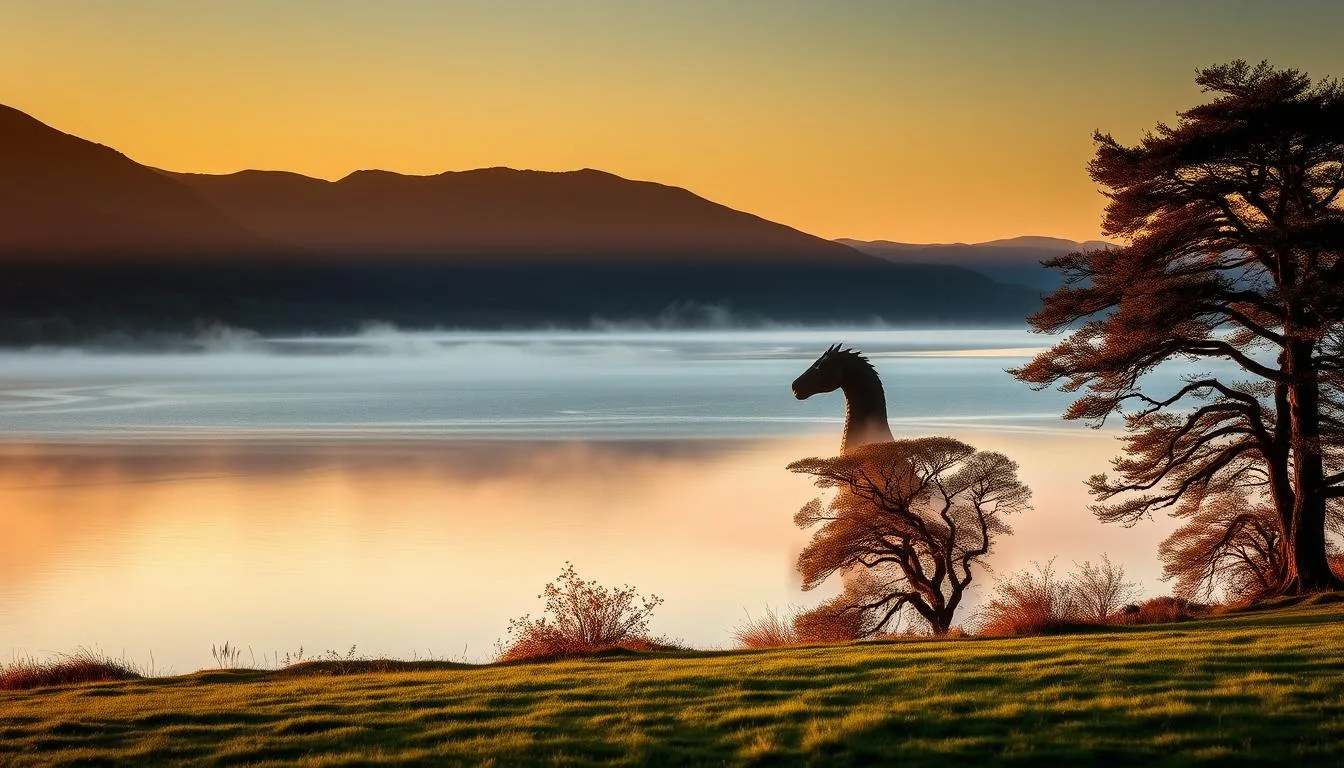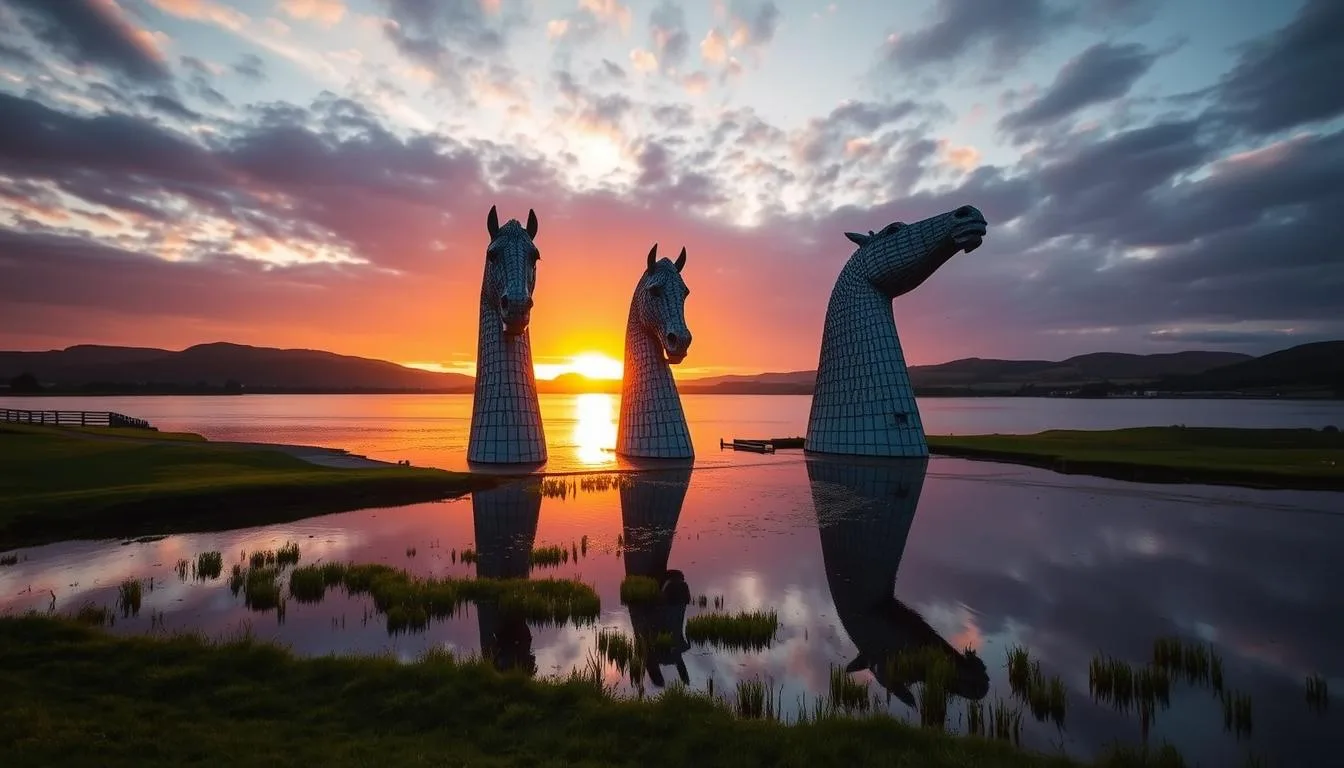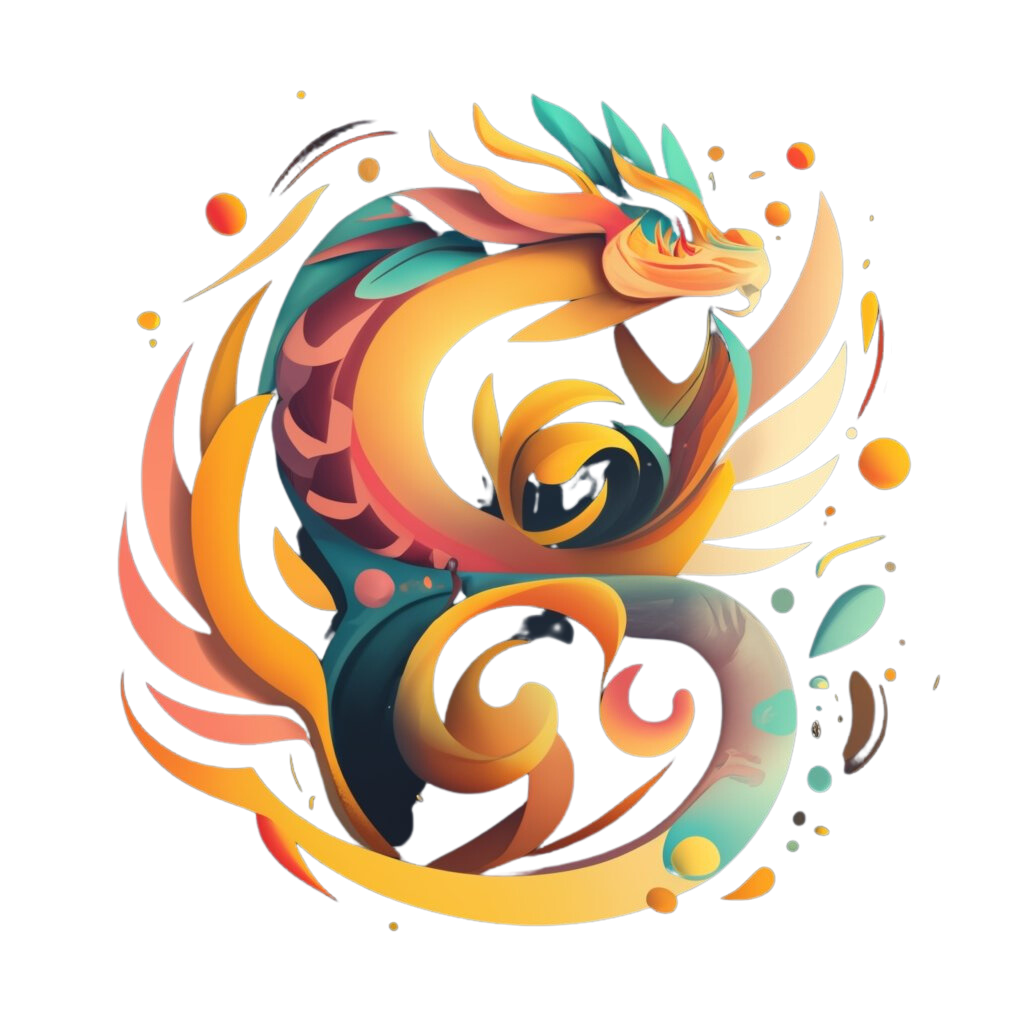The Scottish Highlands are home to a world of mythical creatures. These include the famous Loch Ness Monster and the shape-shifting Kelpies. These beings are part of ancient Celtic legends and folklore.
They live in the misty glens and windy cliffs of the Highlands. These creatures have shaped Scotland's culture and history. They are a big part of the nation's identity.
Explore the magical world of Scottish mythical creatures. Here, the natural and supernatural worlds meet. The legends of old still captivate us today.
Learn about the origins of these mystical beings. Discover their connection to the land and people. See how they influence Highland culture and literature.
Key Takeaways
- The Scottish Highlands are a treasure trove of ancient Celtic folklore and mythical creatures.
- Legendary beings like the Loch Ness Monster, Kelpies, and Selkies have become integral parts of Scotland's cultural heritage.
- These mythical creatures are deeply rooted in the rugged landscapes and oral traditions of the Highlands.
- Exploring the origins and symbolism of Scottish mythical creatures offers insights into the rich tapestry of Highland culture.
- The enduring fascination with these legendary beings reflects the human desire to connect with the mystical and unexplained.
Origins of Highland Folklore and Mystical Beings
The rich tapestry of Scottish mythology and folklore has its roots deeply embedded in the ancient Celtic traditions. These traditions flourished across the Scottish landscape. From the rugged Highlands to the windswept islands, the Highland legends and mystical beings have captivated the imaginations of people for generations.
Ancient Celtic Influences on Scottish Mythology
The Celts, who occupied much of Scotland during the Iron Age, left a lasting impact on the country's mythological heritage. Their beliefs in otherworldly creatures, shape-shifting entities, and the sacred connection between the natural and spiritual worlds laid the foundation for many of the Highland legends that continue to be passed down today.
Oral Traditions Through Generations
The preservation of these Celtic mythology tales has relied heavily on the oral traditions of Scotland. Storytellers, bards, and community elders have carefully curated and transmitted these fantastical narratives. They ensured that the oral traditions remain vibrant and relevant in the Scottish landscape.
Geographic Impact on Mythological Stories
The diverse and often rugged geography of the Highlands has also played a significant role in shaping the Highland legends and the mystical beings that inhabit them. From the mysterious lochs to the windswept moors, the dramatic natural landscapes have inspired and informed the fantastical tales that have become integral to Scottish mythology.
The Legendary Loch Ness Monster: Scotland's Famous Mystery

The Loch Ness Monster, known as Nessie, is a fascinating mystery. It's said to live in the deep waters of Loch Ness in the Scottish Highlands. This has drawn millions to see the legendary lake.
People have seen Nessie since the 6th century, with the first story by St. Columba. Many have reported seeing it, taken photos, and even videos. This has made Scottish tourism very popular.
Many scientists have tried to find out what Nessie is. Some think it might be a plesiosaur, an ancient sea creature. Others believe it could be a natural phenomenon or a hoax.
| Famous Nessie Sightings | Year |
|---|---|
| The "Surgeon's Photograph" | 1934 |
| The "Dinsdale Film" | 1960 |
| The "Rines Photographs" | 1972 |
The mystery of Nessie still attracts many to the Scottish Highlands. It's a big part of Scotland's folklore and culture. Whether it's real or not, Nessie's legend is captivating worldwide.
Kelpies: The Shape-Shifting Water Spirits

In Scottish folklore, the kelpies are a fascinating subject. These water horses are known for their magical powers. They are a big part of Highland legends.
Appearances in Scottish Literature
Kelpies have been a favorite in Scottish stories for a long time. Writers like Sir Walter Scott and Katharine Cameron have featured them. Their ability to change shape and their connection to the Highlands have inspired many.
Modern Interpretations and Art
Today, kelpies still capture our imagination. The Falkirk Kelpies, huge horse sculptures, are a famous example. Artist Andy Scott created them to honor these mythical creatures and Scotland's heritage.
Notable Kelpie Sightings
- In the 19th century, a farmer in Argyll reported encountering a kelpie that had taken the form of a beautiful woman, only to transform into a horse and drag him into a nearby loch.
- In the 1960s, a group of teenagers claimed to have seen a kelpie emerge from the waters of Loch Lomond, its mane dripping with water as it galloped across the surface.
- More recently, in 2016, a walker in the Cairngorms National Park reported spotting a creature that matched the description of a kelpie, vanishing into the depths of a mountain stream.
The legend of the kelpie still fascinates and inspires. It's a key part of Scottish folklore. It captures the hearts of those who love the mysteries of the Highlands.
Scottish Mythical Creatures in Highland Culture

In the Scottish Highlands, mythical creatures are a big part of daily life. They come from ancient Celtic stories and the land itself. These beings are key to Highland traditions and Scottish customs.
The Kelpie, a shape-shifting water spirit, is a favorite among Scots. It looks like a horse. This creature is seen in Scottish stories and art, showing the Highlanders' deep bond with nature.
The Selkie, a seal-folk that can become human, is also loved. Coastal towns have stories of the Selkie. Its legend is a big part of Highland culture, showing the Scottish people's connection to the sea.
| Mythical Creature | Influence on Highland Culture |
|---|---|
| Kelpie | Prominent in Scottish literature and art, reflecting the connection between the Highland people and the natural world. |
| Selkie | Embraced by coastal communities, with the Selkie's transformative legend becoming a cherished part of Highland culture. |
| Brownies | Believed to be helpful house spirits, Brownies have been integrated into Scottish folklore and daily life in the Highlands. |
Brownies, seen as helpful spirits, are also part of Highland folklore. They help with household chores. This shows how Scottish myths are woven into everyday life.

From the Loch Ness Monster to the Blue Men of the Minch, Scotland's mythical creatures are a big part of its culture. The Highland people keep these stories alive. They shape the traditions and customs that make Scotland unique.
Selkies: The Seal-Folk of Scottish Shores
Scotland's remote islands are home to a magical creature called the selkie. These "seal people" can change from seals to humans. Their stories are a big part of Scottish coastal folklore, drawing in both visitors and locals.
Transformation Legends
The selkie's ability to change is key to their legend. They can walk on land as beautiful humans. But, if someone takes their seal skin, they can't go back to the sea. They must stay on land, longing to be their true seal selves.
Connection to Coastal Communities
Selkies are loved by coastal communities in Scotland. They are seen as connected to the sea and nature's cycles. Folklore shows selkies befriending fishermen, falling in love, and inspiring music. Their life as both seal and human shows the deep bond between land and sea for Scottish islanders.
Blue Men of the Minch: Guardians of the Sea
In the captivating folklore of the Hebrides, the "Blue Men of the Minch" are key figures. They are mysterious sea guardians, deeply rooted in Scottish sea legends. They are believed to live in the treacherous waters between Lewis and Harris, known as the Minch Strait.
The Blue Men have blue skin and glowing eyes. They are seen as powerful protectors of the sea. Folklore says they can create fierce storms and waves, testing sailors' skills and bravery.
- Believed to be the spirits of drowned sailors, the Blue Men are known for their unpredictable and mischievous behavior.
- Legends tell of the Blue Men challenging passing ships to riddle contests, with the lives of the crew hanging in the balance.
- Those who fail to outsmart the Blue Men are said to face the wrath of the stormy seas, with their vessels and crews succumbing to the relentless waves.
The tales of the Blue Men of the Minch have fascinated many for generations. They are a big part of the rich Hebrides folklore and Scottish sea legends. These storm kelpies remind us of the power and mystery in the Scottish sea.
The Mystical World of Highland Fairies
The Scottish Highlands are filled with fairy tales that have amazed people for ages. These stories are about Highland fairies, who live in two worlds: the Seelie and Unseelie Courts. Each world has its own magic and mystery.
Seelie and Unseelie Courts
The Seelie Court, or "Good Folk," are kind and helpful. They live in the beautiful glens and forests of the Highlands. They protect the land and its people, giving them good luck and blessings.
The Unseelie Court, or "Unseemly Ones," are different. They are seen as mischievous and sometimes harmful. They can play tricks and even cause trouble.
Fairy Customs and Traditions
Scottish fairy folklore is more than just the Seelie and Unseelie Courts. Many traditions have grown up to honor these magical beings. People leave milk and bread to keep them happy and weave charms to protect themselves.
The magic of Scottish fairies and fairy folklore is everywhere in Highland culture. Their stories and superstitions are part of everyday life. The Seelie Court and Unseelie Court are key parts of Scotland's rich mythological heritage.
Brownies and House Spirits in Scottish Folklore
In Scottish folklore, brownies and other spirits are very special. They were thought to live in rural homes, helping with chores. They would get food or cream in return.
Brownies are small and love order. They work at night, when everyone is asleep. They help with things like butter churning and floor sweeping.
But there's more to Scottish folklore than brownies. There are also the "Domovoi" or "Household Guardians." These spirits protect the home and family. They might make strange noises or move things around.
FAQ
What are the origins of Scottish mythical creatures?
Scottish mythical creatures come from ancient Celtic beliefs. These stories have been shared for generations. The Scottish Highlands' diverse landscape has shaped these legends.
What is the most famous Scottish mythical creature?
The Loch Ness Monster, or "Nessie," is Scotland's most famous creature. It has fascinated people worldwide. This has led to many sightings, scientific studies, and tourism in Loch Ness.
What are kelpies, and how are they portrayed in Scottish folklore?
Kelpies are water spirits in Scottish folklore. They look like horses with wet manes. These creatures are found in Scottish literature and modern art, like the Falkirk Kelpies.
What are selkies, and how are they connected to coastal communities in Scotland?
Selkies are creatures that turn from seals to humans. They are important in Scotland's coastal communities. These legends show a deep connection to the sea and local life.
Who are the Blue Men of the Minch, and what is their role in Scottish folklore?
The Blue Men of the Minch guard the sea in Hebrides folklore. They control waves and winds. These storm kelpies are key to maritime traditions and superstitions.
What is the role of fairies in Scottish Highland culture?
Fairies, both Seelie and Unseelie Courts, are vital in Scottish Highland culture. They influence traditions and superstitions. Many believe in fairies and their impact on life.
What are brownies and house spirits, and how do they feature in Scottish folklore?
Brownies and house spirits help in Scottish homes. They perform tasks and chores. These spirits are a big part of folklore, with families honoring them through customs.
Learn more about European Mythical Creatures in this blog post: European Mythical Gods and Creatures
